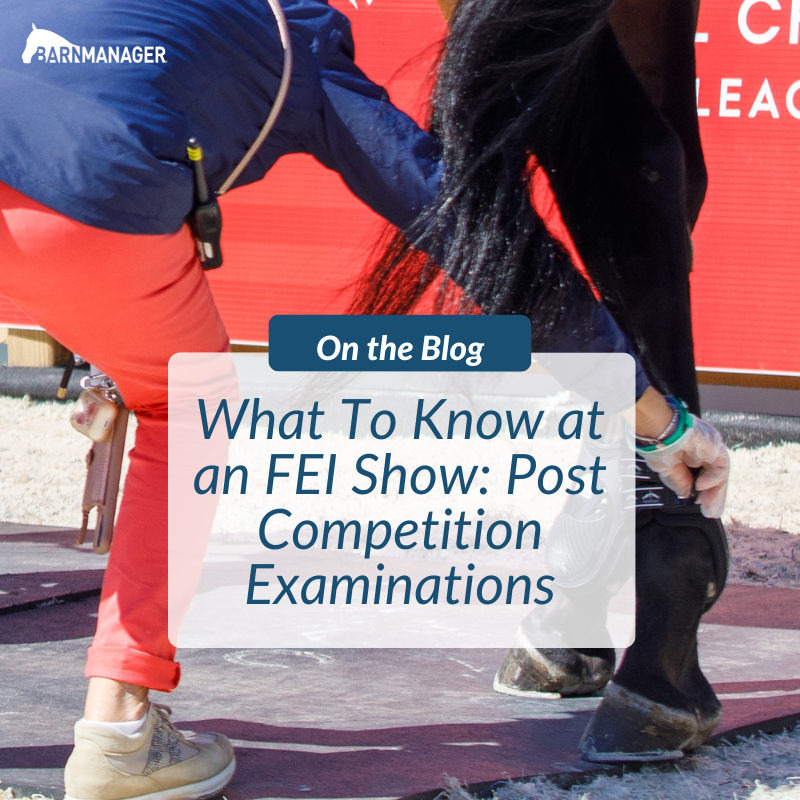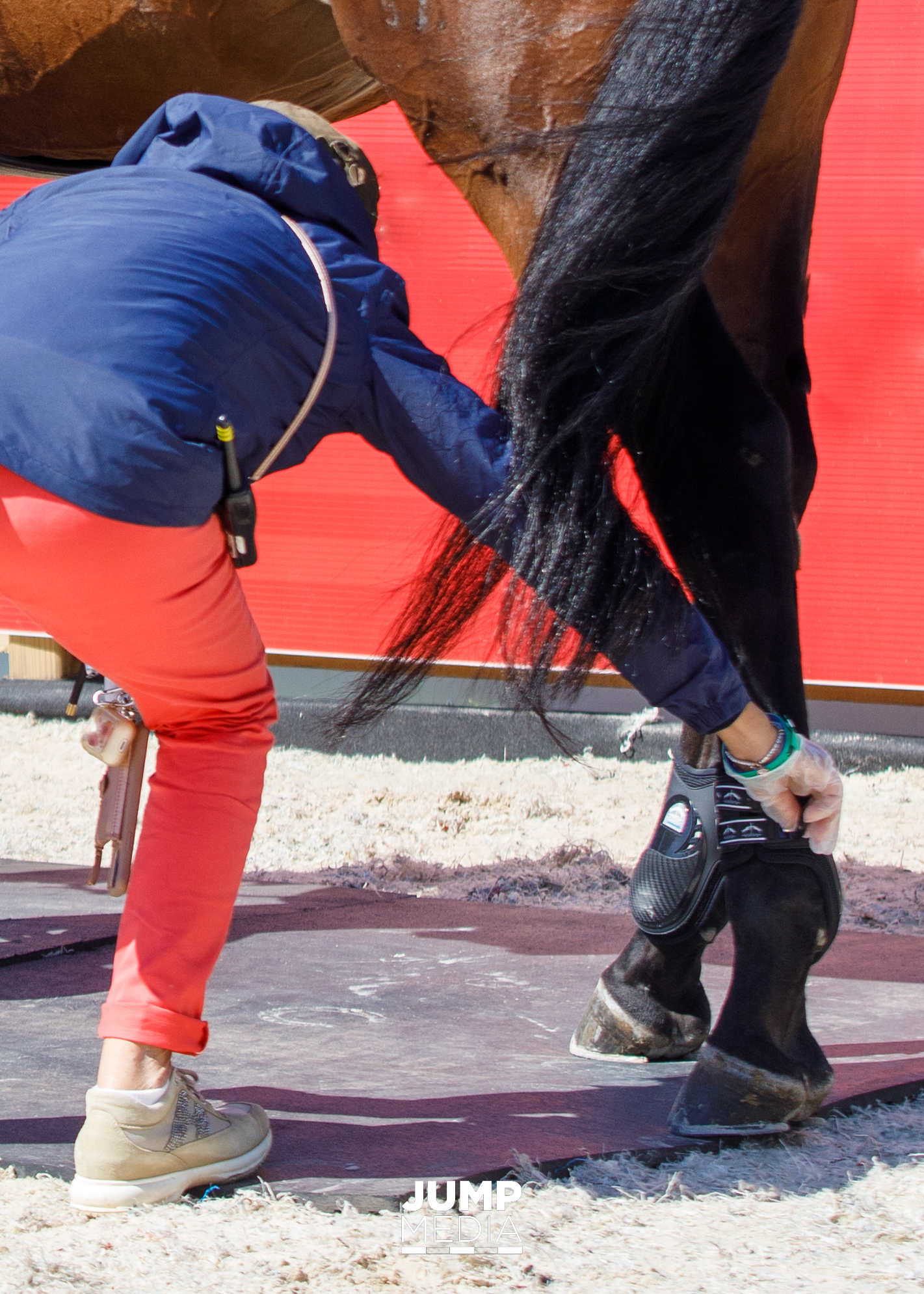
What To Know at an FEI Show: Post Competition Examinations
Stepping up from the national level to the international level at a Fédération Equestre Internationale (FEI) show comes with additional checks to insure the fairness of sport and welfare of the horses. In all disciplines, the post-competition inspection of the horse and equipment is mandatory for the result to be made official. Understanding this process will help you feel more prepared at the show. For more information about regulations in the warm-up arena read part two of BarnManager’s What To Know at an FEI Show blog here. Part one regarding the FEI stabling area can be found here.
Post-Competition Procedure
Immediately after competing, the rider must stay on their horse and walk over to the post-competition horse examination. This is true for international dressage, show jumping, and eventing competitions. A steward uses a gloved hand to check the equipment on the horse to ensure all tack is legal to use, changing the glove for each competitor to avoid any cross-contamination.
Dressage
For dressage, the FEI steward looks over the horse’s body with special attention to a few key areas. The steward looks at the athlete’s spurs and the horse’s side to make sure the spurs are legal to use and that they have not drawn blood. They also use their fingers to confirm the noseband is not too tight. If the horse is using a bonnet, the steward will ask for it to be removed or remove it themselves. This allows them to check in the horse’s ears to make sure the athlete has not used earplugs, which are not permitted in a dressage test. Blood in the horse’s mouth or on the body as caused by the rider results in immediate elimination of the athlete.
Show Jumping and Cross-Country

In addition to the body examination and checking of the noseband, the use of boots or bandages in show jumping and cross-country presents an additional measure that needs to be checked carefully by the FEI stewards. The steward will remove boots and/or bandages on the legs and make sure they are compliant with FEI regulations. They will also check the horse’s legs to make sure they have not been injured or scraped by the equipment. Once the steward gives the “okay,” the boots or bandages can be reapplied, if desired, before the horse finishes cooling out and heads back to the stabling area.
For show jumping and cross-country, if a steward sees blood in the horse’s mouth, they can authorize wiping of the mouth. This is to help determine if the horse has bitten itself in or on the mouth accidentally or if there is a bigger issue. If the bleeding persists, the athlete will be eliminated. When a steward finds blood on the body caused by the evident overuse of spurs or a whip, the athlete is eliminated in this case as well.
Being aware of the intricacies of participating in an FEI show from arriving at the stabling area to completing competition will ensure you and your team are well prepared for a smooth and successful week. While it might seem like a lot to manage at first, knowing the rules, having a plan, and delegating responsibilities will help keep everything on track. For more information about entering an FEI show, read BarnManager’s FEI Paperwork blogs with part one about horse passports here, part two regarding registrations and entries here, and part three pertaining to the check-in and jog here.
Have questions about utilizing BarnManager or want to give it a try for yourself? Request a live demo here!